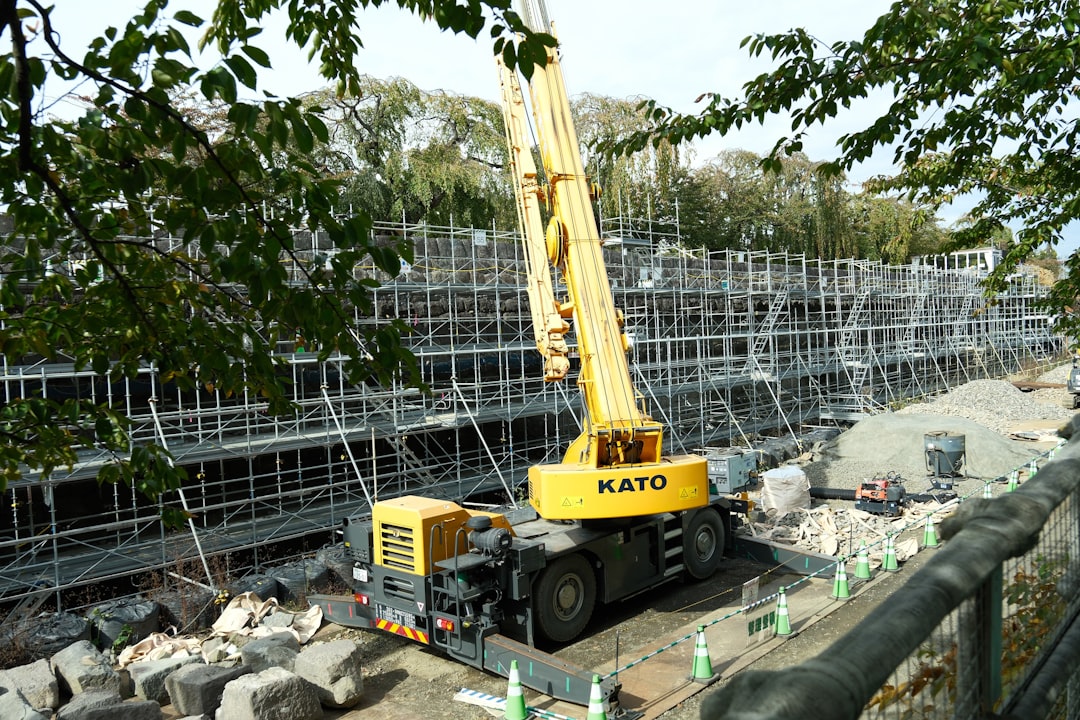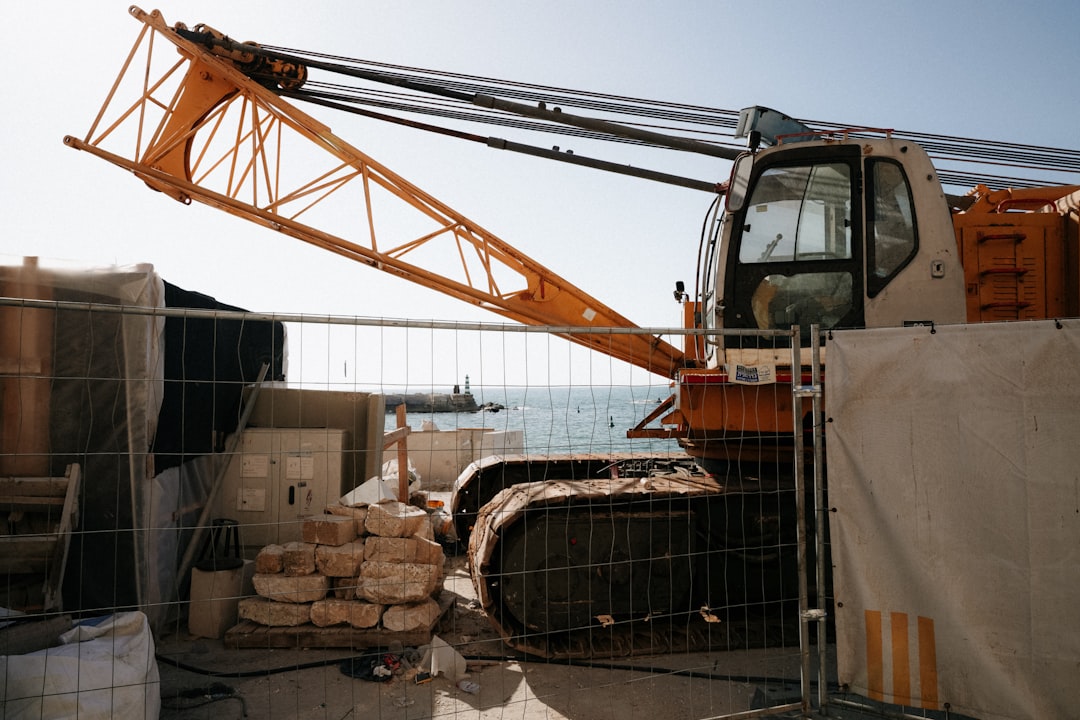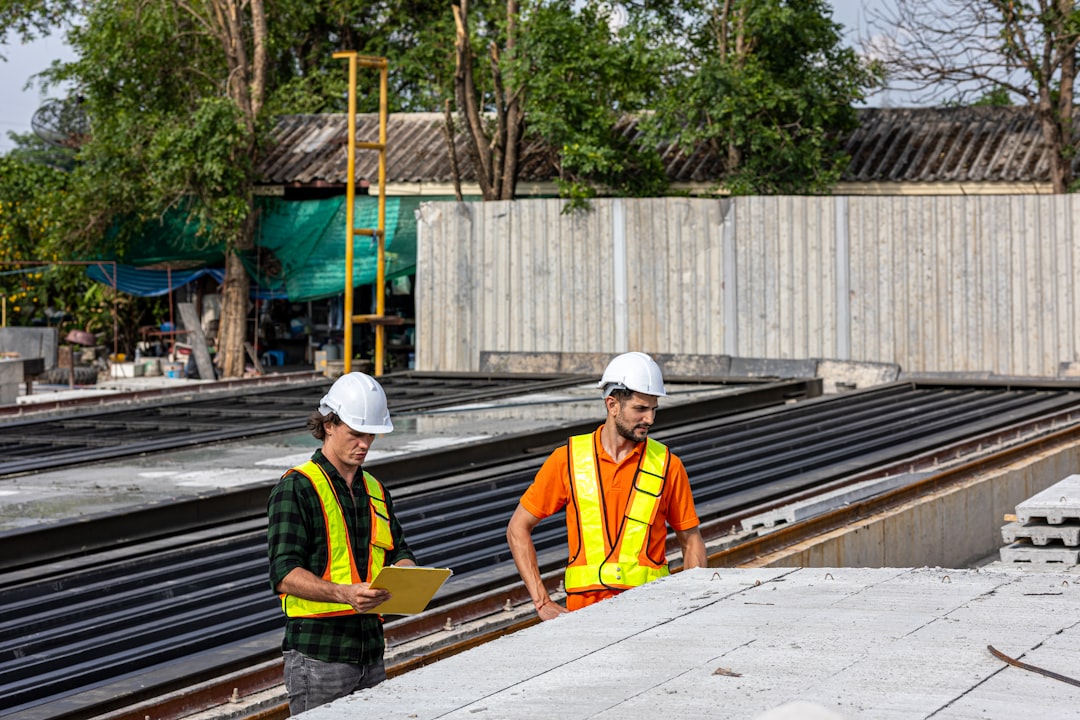

Engage prospects with a scan and streamline customer engagement with FREE QR code marketing tools by Sona – no strings attached!
Create a Free QR CodeFree consultation

No commitment

Engage prospects with a scan and streamline customer engagement with FREE QR code marketing tools by Sona – no strings attached!
Create a Free QR CodeFree consultation

No commitment
The foundation installation services industry is undergoing rapid transformation as property owners and contractors demand faster, more transparent, and data-driven solutions for structural repair, construction services, and ongoing maintenance. Traditional analog methods such as printed brochures, manual inspection appointment forms, or paper-based job tracking often create friction, limit visibility into high-intent prospects, and introduce risk for both service providers and clients seeking building foundation solutions.
A persistent challenge is that many high-value prospects research local foundation services without filling out forms or making initial contact, leaving businesses unaware of potential opportunities. At the same time, limited visibility into who is interacting with property signage, trucks, or field ads can cause missed chances for personalized follow-up.
QR codes offer a simple yet powerful bridge between the physical job site and robust digital workflows. For foundation installation services, QR codes unlock real-time engagement, instant access to documentation, project status updates, and seamless links to foundation inspection reports or estimates, streamlining processes that once relied on lengthy phone calls or in-person visits. When anonymous interactions become trackable touchpoints, service providers are positioned to capitalize on previously hidden demand.

QR codes are perfectly positioned to connect property owners and site managers with digital resources for every stage of foundation installation, repair, and inspection. Teams often miss or delay follow-up when paper-based forms are lost or misplaced at busy jobsites. Moving away from printed contracts, paper estimates, and analog scheduling eliminates opportunities for untracked data and lost leads. With QR codes, every sign, truck, and equipment tag can serve as an on-demand access point, reducing missed prospects and communication errors while building a clear digital record of interest.
Modern QR programs can be launched quickly and scaled across fleets and worksites. The key is to map each QR placement to a specific action, collect essential contact details with minimal friction, and send the data into your CRM or project management system in real time. Growth-oriented firms also design their codes with clarity and context so scanners know exactly what they will get and why it matters, such as instant quotes, live project status, or warranty verification.
Modern QR campaign software allows every code to be tracked, optimized, and updated dynamically as processes evolve. Platforms like Sona QR help teams create, manage, and analyze codes centrally, ensuring you can update destinations without reprinting materials and link scans to downstream results for full attribution.

Potential clients in foundation installation services often hesitate to call or fill out forms found on traditional print materials. As a result, businesses lack visibility into true interest and promising leads remain hidden. QR codes solve this issue by making the offline-to-online handoff effortless and measurable for both residential and commercial audiences.
In practical terms, QR codes compress the time between awareness and action. A property manager can scan a code on a fence banner to request a slab inspection, a homeowner can access a structural repair guide from a postcard, and a general contractor can verify helical pile specs from a jobsite placard. Each scan becomes a digital event that is easy to attribute, segment, and nurture through the sales process.
Using QR codes across all customer touchpoints ensures teams can close the loop on anonymous interactions, prioritize high-intent prospects, and avoid missing opportunities. For a trade where timing and trust are essential, QR-powered workflows keep your brand responsive and credible.

Foundation installation providers often struggle to capture accurate client information in the field, especially when relying on verbal commitments or misplaced paperwork. QR codes help by creating standardized, trackable interactions. Selecting the right format for each job or marketing asset ensures that scans translate into productive actions. If you’re new to the space, this QR code basics overview is helpful.
In a typical foundation services operation, the most useful formats include web redirects for calculators and case studies, dynamic forms for assessments and estimates, and vCards for quick contact exchange. When codes are managed centrally, you can swap destinations as campaigns evolve and attach UTM parameters for channel-level reporting.
Modern QR management systems make it easy to update and optimize these formats as client needs evolve. Teams can A/B test destinations, refine calls to action, and deploy localized codes for specific neighborhoods or developments.

Despite strong local visibility, foundation installation firms often struggle to convert attention into trackable business opportunities. Unmarked signage, generic print ads, or static vehicle wraps make it difficult to know which outreach creates results. QR codes can transform these physical assets into accountable growth channels.
The key is to prioritize placements where scanning is convenient and intent is high. Jobsites, neighborhood signage, invoices, and proposals all present moments where curiosity peaks and action is likely. When each placement uses a unique code tied to a tailored destination, you can identify your highest-performing markets and messages. For deeper ideas, explore contractor QR marketing.
Strategically mapped QR placements help businesses align marketing with audience interests and ensure no client interaction is missed. Over time, these insights let you double down on high-yield channels and phase out low performers.

Foundation specialists frequently lose high-interest prospects without seamless follow-up at every touchpoint. QR codes address this by connecting curiosity to action at the precise moment someone is ready to engage. The most effective use cases serve common buyer questions and operational needs while capturing measurable signals.
Multiple departments can benefit. Sales gets better-qualified inquiries, operations gets accurate data from the field, and clients enjoy faster responses with less paperwork. When paired with a CRM, each scan can trigger alerts, assignments, and automations that keep deals moving.
Each scan streamlines the client experience while capturing intent data that was previously lost to paper-based processes. Over time, you can benchmark scan-to-book conversion rates and refine your messaging and placements for stronger results.
High demo interest often goes unconverted in foundation installation when forms are abandoned or contact info is never captured. QR code campaigns address this by turning every scan into a data point that can be segmented and nurtured. The goal is to match content to the buyer’s mindset and follow-up with relevant next steps. For advanced tactics, see intent-driven retargeting.
Segmentation starts by using different QR codes for awareness, consideration, and conversion materials. With unique codes and tagged destinations, your analytics can reveal which topics resonate, which neighborhoods outperform, and which call to action drives the most bookings.
With Sona QR, each scan can carry parameters like placement, creative, and time of day. This context allows sharper retargeting and helps sales teams prioritize outreach to scanners showing repeated or high-intent behavior, such as multiple scans of pricing content.
A disconnected marketing mix leads to missed handoffs between offline and digital channels, incomplete data, and inconsistent follow-up. QR codes unify these touchpoints by providing a universal bridge from printed or physical assets to digital destinations. This connection enriches attribution, reduces friction, and ensures that attention turns into measurable action. For strategy on connecting offline touchpoints to revenue, read offline attribution.
When you embed QR codes consistently across field materials, direct mail, and out-of-home advertising, you create a connected experience that guides prospects from awareness to appointment. Codes can also support user-generated content campaigns, project showcases, and partner referrals, especially in neighborhoods where visual proof and credibility drive decisions.
QR analytics connected to CRM and reporting systems clarify what works, what needs adjustment, and which prospects require immediate attention. A centralized platform like Sona QR lets teams manage codes at scale, edit destinations without reprints, and sync scan data with sales and marketing tools.
Planning and discipline turn QR codes from novelty to revenue driver. The following checklist helps foundation installation teams move from one-off experiments to a repeatable growth program tied to business outcomes. Start small with a high-intent placement, then expand as you learn what drives conversions in your market.
At each step, define a clear user action and a success metric. For example, a jobsite fence code might target inspection bookings, while a direct mail code might focus on calculator usage. Use dynamic codes so you can test and evolve without reprinting.
Decide what you want the scanner to do and why that action matters. Objectives should be specific and measurable, such as increasing qualified inspection requests from jobsite signage by 25 percent over 60 days. Map the target outcome to a landing page or tool designed to remove friction and build trust.
Choose between static and dynamic based on flexibility and analytics needs. Static codes are suitable for evergreen resources like maintenance guides. Dynamic codes are editable, trackable, and compatible with A/B testing and retargeting. Start creating QR codes for free.
Design for visibility, clarity, and context. Include a benefit-driven call to action and make sure the code scans easily in the environments where it will be used, such as bright sunlight at a jobsite or from a moving vehicle on a truck wrap.
Deploy where intent is likely to be high. Start with one to three high-impact placements, such as trucks, proposals, and jobsite signage. Use unique codes per asset so you can compare performance and attribute results accurately.
Review analytics weekly during the first month. Measure scans, landing page engagement, and conversion rates to bookings or form submissions. If a campaign stalls, adjust the CTA, placement, or destination.
A disciplined QR code deployment strategy eliminates missed segments and untargeted outreach. Over time, your program will shift budget and attention to placements that deliver the most revenue, not just the most scans.
Foundation installation teams often lack clear insight into which marketing efforts generate real revenue. QR campaign analytics solve this by attaching context and outcomes to every scan. The result is transparent performance data that spans from first engagement to signed contract.
To make analytics actionable, you need to go beyond simple scan counts. Track channel, creative, and location, then connect that data to downstream events like page views, calls, form fills, calendar bookings, and e-signatures. This full-funnel approach reveals which assets and placements move the needle, especially when you apply multi-touch attribution.
For example, after implementing QR codes on jobsite signage and estimates, many contractors report higher booking rates and faster response times. When scans are linked to proposals and signatures, teams can directly attribute large contracts to specific placements and messages, improving overall marketing efficiency. Platforms like Sona QR and Sona.com make it straightforward to capture real-world engagement, sync with your tech stack, and connect scans to revenue.
QR programs grow stronger when they are standardized, measurable, and supported by staff. Expand impact by giving every asset a distinct role in the buyer journey and by making next steps automatic. Internal education matters too, since tech adoption depends on clear benefits for clients and crews.
Focus on the placements and workflows most common in this trade. Trucks, jobsite fencing, invoices, and direct mail frequently drive the best results. Integrations reduce manual work and errors, while analytics show what to replicate and what to retire.
A creative deployment example specific to this industry: print a QR code on invoices that routes clients to a short satisfaction survey and a maintenance scheduling page for seasonal check-ins. Another option is a QR code on a neighborhood yard sign that opens a gallery of local projects and a one-click request for a free evaluation. For additional ideas, see these direct mail QR tips.
Contractors and project managers often struggle with referrals and post-project engagement. QR codes can energize these touchpoints by making it easy for neighbors to explore verified work, for clients to retrieve documentation, and for teams to prompt ongoing services with minimal friction.
The following examples illustrate how simple placements can generate measurable outcomes. Each example can be managed with dynamic codes to allow content updates without reprinting and to connect scan data to CRM records.
Inviting customers to provide feedback or schedule future services via QR codes on receipts and invoices strengthens relationships and keeps your brand top of mind. When paired with retargeting, these scans can fuel high-performing nurture programs.
QR codes have revolutionized the foundation installation services industry by transforming traditional project workflows into efficient, data-driven processes. Whether it’s streamlining site access, enhancing communication between contractors and clients, or enabling instant access to critical installation details, QR codes eliminate delays and reduce errors, resulting in faster, more reliable foundation projects. Imagine instantly sharing up-to-date installation instructions or safety protocols on-site, ensuring every stakeholder is informed and aligned in real time.
With Sona QR, you can create dynamic, trackable QR codes tailored specifically for foundation installation needs—update information instantly without reprinting, monitor scan activity to optimize project management, and connect every scan to measurable outcomes like improved project timelines and client satisfaction. Start for free with Sona QR today and build smarter, more connected foundation installation experiences that drive success from the ground up.
Common signs include structural damage, soil or drainage issues, and the need for soil stabilization or pier installation, which require professional evaluation and repair.
Costs vary depending on the type of service, soil conditions, and project scope, but interactive QR code links to cost calculators can provide personalized estimates.
The process typically involves soil and drainage assessments, installation of piers or slabs, ongoing inspection, and project progress updates, all of which can be tracked digitally.
Look for providers who use transparent, data-driven workflows such as QR codes for real-time project updates, instant documentation access, and verified client communication.
QR codes enable instant access to verification documents like warranty details, inspection reports, and maintenance tips, reducing misinformation and improving trust.
Services include slab inspections, pier installation, soil stabilization, drainage assessments, structural repairs, and ongoing maintenance.
Timelines vary by project complexity, but QR code-enabled status updates provide clients real-time progress information to track the duration closely.
Problems include soil instability, drainage issues, structural cracks, settling, and damaged piers that need specialized assessment and repair.
Preparation involves allowing access for inspections and equipment, reviewing project documentation digitally via QR codes, and coordinating scheduling with your service provider.
Modern methods include QR code-enabled digital workflows for scheduling, documentation, real-time updates, dynamic forms for assessments, and data-driven marketing and follow-up.
Use Sona QR's trackable codes to improve customer acquisition and engagement today.
Create Your FREE Trackable QR Code in SecondsJoin results-focused teams combining Sona Platform automation with advanced Google Ads strategies to scale lead generation

Connect your existing CRM

Free Account Enrichment

No setup fees
No commitment required

Free consultation

Get a custom Google Ads roadmap for your business






Launch campaigns that generate qualified leads in 30 days or less.
